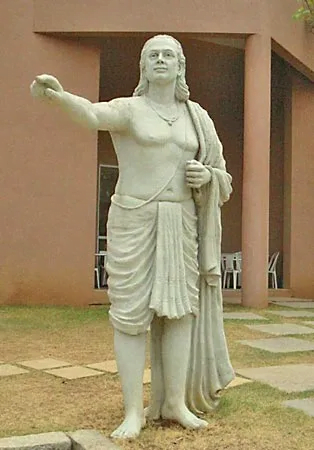Bhaskaracharya, also known as Bhaskara II, was a 12th-century Indian mathematician and astronomer who made significant contributions to mathematics and astronomy. He was born in 1114 AD in the Indian state of Karnataka and lived for about 70 years. He was the son of Mahesvara and the grandson of Chudamani, who were both mathematicians and astronomers. Bhaskaracharya was a prolific writer and composed several influential mathematical and astronomical works, including “Siddhanta Shiromani” and “Lilavati.”

Bhaskar acharya’s “Siddhanta Shiromani” is a comprehensive treatise on mathematics and astronomy that consists of four parts. The first part, called “Leelavati,” is a mathematical work that deals with arithmetic, geometry, and algebra. This work contains many original results and solutions to mathematical problems, and it was widely studied and used by mathematicians and astronomers for centuries. The second part, called “Bijaganita,” is an algebraic work that deals with the solution of equations and the theory of numbers. The third part, called “Goladhyaya,” is an astronomical work that deals with the calculation of astronomical phenomena, such as eclipses, planetary positions, and the movement of the moon. The fourth part, called “Ganitadhyaya,” is a mathematical work that deals with trigonometry and the calculation of sines, cosines, and tangents.
Bhaskar acharya’s “Lilavati” is a mathematical work that is aimed at children and students. It is written in verse form and contains many interesting mathematical problems and solutions. The work covers a wide range of mathematical topics, including arithmetic, geometry, and algebra. Bhaskar acharya’s “Lilavati” is still widely studied and used as a textbook in Indian schools today.
Bhaskaracharya made many significant contributions to mathematics and astronomy. For example, he was the first mathematician to use the method of continuity to find the roots of an equation. He was also the first to use the power of negative numbers in algebra. He was a pioneer in the development of spherical trigonometry and used it to calculate the positions of planets and stars. Bhaskaracharya also made important contributions to the theory of numbers, including the discovery of the concept of the “cyclic number.”
Bhaskar acharya’s works were widely studied and used by mathematicians and astronomers in India and throughout the world. His “Siddhanta Shiromani” was translated into Arabic, and it was widely read and used by astronomers and mathematicians in the Middle East. Bhaskar acharya’s works were also highly regarded by European mathematicians and astronomers during the Renaissance, and his works were translated into Latin and widely studied in Europe.
Bhaskaracharya’s legacy continues to this day. He is widely regarded as one of the greatest mathematicians and astronomers of all time, and his works are still widely studied and used. Bhaskaracharya’s contributions to mathematics and astronomy have had a lasting impact on the development of these subjects and have greatly influenced the development of science and technology.
In conclusion, Bhaskaracharya was a great Indian mathematician and astronomer who made many significant contributions to mathematics and astronomy. He was a prolific writer who composed several influential mathematical and astronomical works, including “Siddhanta Shiromani” and “Lilavati.” Bhaskar acharya’s works were widely studied and used by mathematicians and astronomers in India and throughout the world, and his contributions to mathematics and astronomy have had a lasting impact on the development of these subjects.


